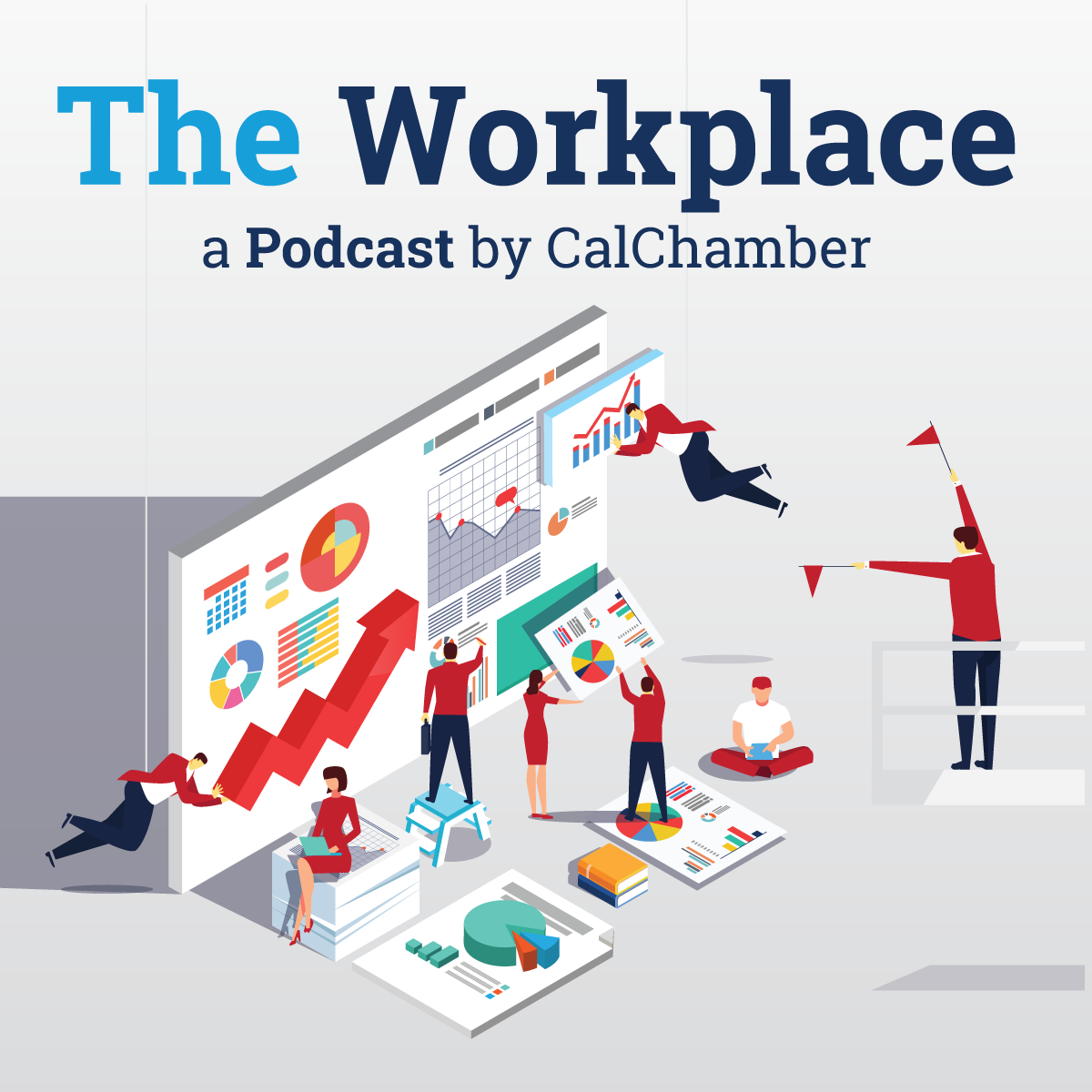
In Episode 202 of The Workplace podcast, CalChamber Associate General Counsel Matthew Roberts and PPIC researchers Sarah Bohn and Hans Johnson discuss how remote work is reshaping the California labor market.
The article below provides a brief summary of the topics discussed in the podcast episode. Readers are encouraged to listen to the podcast for a more detailed discussion.
PPIC Research
Remote work is now a feature of our lives thanks to the COVID-19 pandemic, and remote work arrangements have become an outright expectation of many workers, Roberts says.
Thanks to research by Sarah Bohn, Hans Johnson and Eric McGhee for the Public Policy Institute of California (PPIC), we are now starting to see how much the labor market has changed as a result.
Their work, released in a three-part blog series, examines who is working from home, how remote work has affected migration, and how remote work has reshaped California’s labor market.
Who Is Working Remotely?
Bohn, vice president and director of the PPIC Economic Policy Center and senior fellow at the Public Policy Institute of California, says that many more Californians are working remotely now than before the pandemic. Jobs most likely to be done remotely include writers, editors, and software developers.
Johnson, senior fellow at the PPIC Higher Education Center and a member of the PPIC Economic Policy Center, adds that in PPIC surveys, the majority of Californians want to work remotely. However, it’s no surprise that only certain types of workers are able to avail themselves of these opportunities.
For example, workers with a college degree are about three times more likely to be able to work remotely compared to workers who have only a high school diploma.
There also is a huge wage divide, he says. A third of workers who have very high incomes, making more than $200,000 a year, primarily work remotely.
The age group with the highest share of remote workers are those aged 65 and over, with one out of four working primarily from home.
Migration
Remote work led to a substantial increase in the number of workers leaving the Bay Area and to a lesser extent, Los Angeles, and moving either elsewhere in California, or also moving out of the state, Johnson says. Within California, one of the most popular destinations from the Bay Area is Sacramento.
The main driver of this migration was the high cost of housing. This driver was also true for people leaving the state, Johnson explains.
“As we know, California and the Bay Area are exorbitantly expensive, but even for people who are renting, rents tend to be much lower in interior locations, and in other states than in California,” he points out.
Changes, Impacts on Labor Market
The shift to remote work is the biggest change we will probably ever see, Bohn says. Before the pandemic, about 5% of workdays were done from home and today the number is at about 27%. For the past two years, the percentage of work done at home has been consistent, between 25% and 30%.
Bohn explains that economists have paid close attention to remote work’s impact on productivity, and they have not seen a noticeable dip. For employers who are balancing business costs, this could be a key factor.
Perhaps having a smaller in-person workforce could be less costly for some employers as they are not losing productivity from remote workers, she said.
An area affected by remote work is retention and recruitment. Research evidence suggests that when hybrid options or fully remote options are on the table, it can improve recruitment and improve retention, Bohn says.
Interestingly, employees are even willing to trade off higher wages for the flexibility of working remotely.
“That catches my attention as an economist, because we also know that wages and earnings are usually the No. 1 thing that employees are looking for,” she says.
This makes remote work worth consideration by employers looking to cut costs, she adds.
To read more about Bohn’s and Johnson’s research on remote work, click here.

